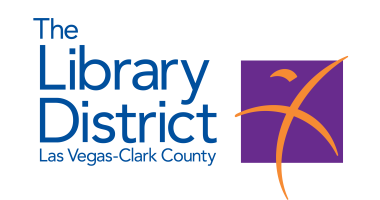Main Body
11 The Spreading Terror
White Buffalo
The city was a coiled spring, its taut energy humming with a terrifying undercurrent. The initial shock of Sarah Jenkins’ murder, a meticulously planned and executed crime, had given way to a paralyzing fear after Daniel Miller’s brutal
slaying. The second crime scene, a gruesome tableau of violence and dismemberment had shattered the carefully constructed facade of normalcy, leaving behind a gaping wound of fear in the city’s collective psyche. News channels ran a relentless loop of the grim details, their anchors’ voices tight with a barely contained dread. The faces of the victims, both young and ambitious, flashed across screens, their bright smiles now haunting reminders of the fragility of life.
The grainy security footage of Miller, his last moments captured in a nightmarish ballet of terror, was replayed ad nauseam, fueling the city’s rising anxiety. The
Image of the carved falcon, stained crimson, became a morbid symbol, a chilling emblem of the terror that gripped the city. Social media exploded with a cacophony of fear, speculation, and raw emotion. Rumors spread like wildfire,
fueled by fragmented information and unchecked anxieties. Online forums became echo chambers of paranoia, with theories ranging from crazed cults to government conspiracies vying for attention.
The usual banter and lighthearted chatter were replaced by a palpable sense of
dread, a shared awareness of vulnerability. People stayed indoors, their windows and doors locked tight, the shadows outside taking on a menacing significance. The usual vibrant streets, once bustling with life, were now eerily deserted, an
unsettling quiet replacing the familiar urban hum. The police presence increased exponentially, blue and red lights flashing intermittently in the darkness, like the frantic heartbeat of a wounded city. Patrol cars cruised the streets, their sirens a constant reminder of the threat that loomed, a stark contrast to the previously serene nights.
Yet, the increased police presence did little to assuage the escalating fear. The killer remained elusive, a ghost flitting through the city’s underbelly, mocking the efforts to apprehend him. The city’s usually vibrant nightlife, a tapestry of laughter and Music, had vanished, replaced by a stifling silence. Restaurants and bars were deserted, their doors locked, the promise of conviviality replaced by an unnerving emptiness. The once-crowded streets, usually alive with the chatter of
passersby were eerily quiet, their emptiness amplifying the sense of foreboding.
The city that never slept was now gripped by a paralyzing fear, its usual rhythm disrupted by the chilling presence of an unseen predator. In stark contrast to the city’s panic, the killer remained a figure of chilling detachment. The escalation of violence wasn’t driven by a desperate need for attention; rather, it seemed to be a calculated, almost artistic progression. The second murder wasn’t simply random violence; it was a deliberate intensification of the ritual, a step further into a
macabre dance of destruction. Each detail, from the placement of the body to the precise carving of the falcon, suggested a cold, calculated mind operating beyond the reach of ordinary emotion.
The contrast between the killer’s clinical detachment and the city’s raw fear was a disturbing juxtaposition, a macabre theater of extremes. The city’s fear, raw and visceral, was mirrored by the killer’s chilling control, a calculated
precision that underscored the depth of his pathology. The very fact that he could inflict such violence, yet remain untouched by the city’s collective fear, only amplified the sense of impending doom. The killer was a predator at the top of the food chain, unseen, yet omnipresent. He was a ghost story woven into the very fabric of the city’s fear, a nightmare waiting to happen.
The silence in Ava’s office was broken only by the rhythmic ticking of the clock, each ticking a small hammer blow against the wall of her resolve. The city’s fear was a palpable presence, a weight pressing down on her shoulders. She could almost feel the collective anxiety radiating from the streets, a silent scream echoing in the city’s deserted spaces. The pressure to find the killer, to bring an end to the escalating terror, was immense, a burden she carried alone, a
burden almost too heavy to bear. Dr. Reed’s words echoed in her mind, “The killer is not just killing; he’s performing a ritual.
Each murder is a stage, an escalation.” The meticulous precision of the first murder, followed by the chaotic brutality of the second, painted a disturbing picture of a mind unraveling, a descent into madness meticulously orchestrated. The ritualistic elements, the cryptic messages, the symbolic falcon – all pointed
towards a deeper, more sinister pathology than simple bloodlust. Ava looked out of her office window, the city lights blurring into a hazy canvas of fear. The city’s vibrant energy had been replaced by a heavy blanket of anxiety, an oppressive silence that amplified the city’s fear.
Each flicker of light, each passing car, triggered a fresh wave of anxiety. The city was on edge, poised on the precipice of chaos, waiting for the next act in the killer’s macabre performance. The hunt was on, but the game was far from over. The odds were stacked against them, and the killer was playing a game with a chilling level of control. The city, with its palpable fear, was a chessboard, and the killer was the master strategist. Ava knew that the next move, the next crimson stain, could determine the fate of the city itself. The countdown had begun, and the clock was ticking relentlessly.
